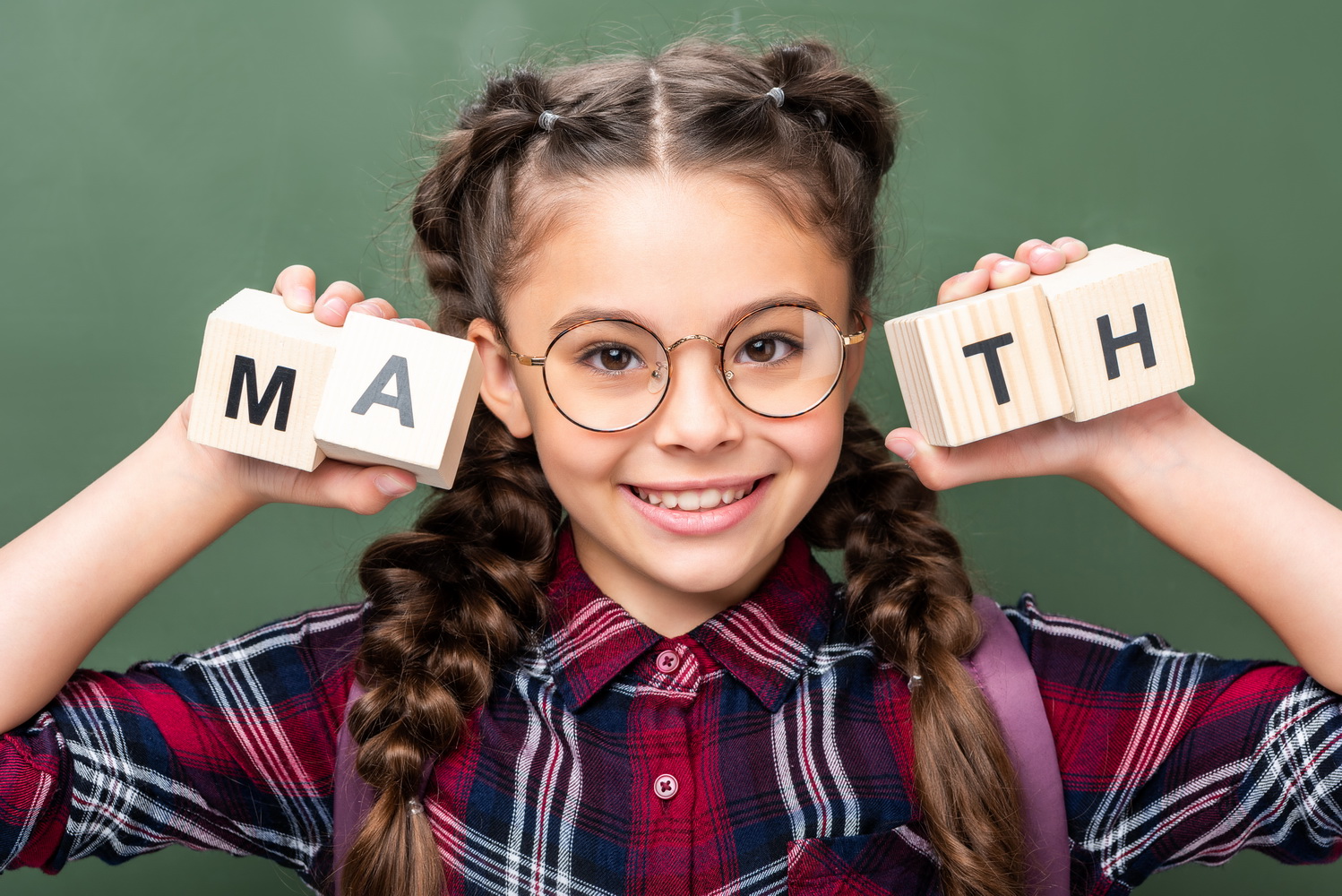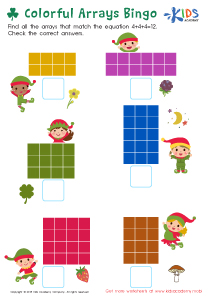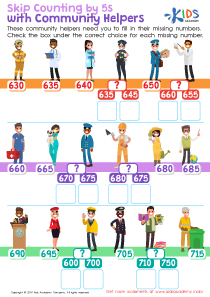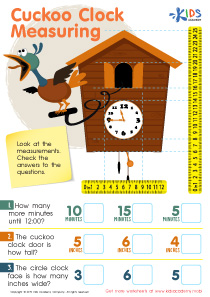Shape identification Grade 2 Geometry Worksheets
6 filtered results
-
From - To
Explore our engaging "Shape Identification Grade 2 Geometry Worksheets," designed to enhance your child's understanding of geometric shapes. These worksheets provide a fun and interactive way for second graders to identify and classify various shapes, including circles, squares, triangles, and more. Each activity encourages critical thinking and helps children develop essential math skills while fostering creativity. From matching shapes to drawing and coloring activities, these worksheets are perfect for both classroom use and at-home learning. Download our free printables today and watch your child's confidence in geometry soar! Perfect for educational enrichment and aligning with second grade curriculum standards.
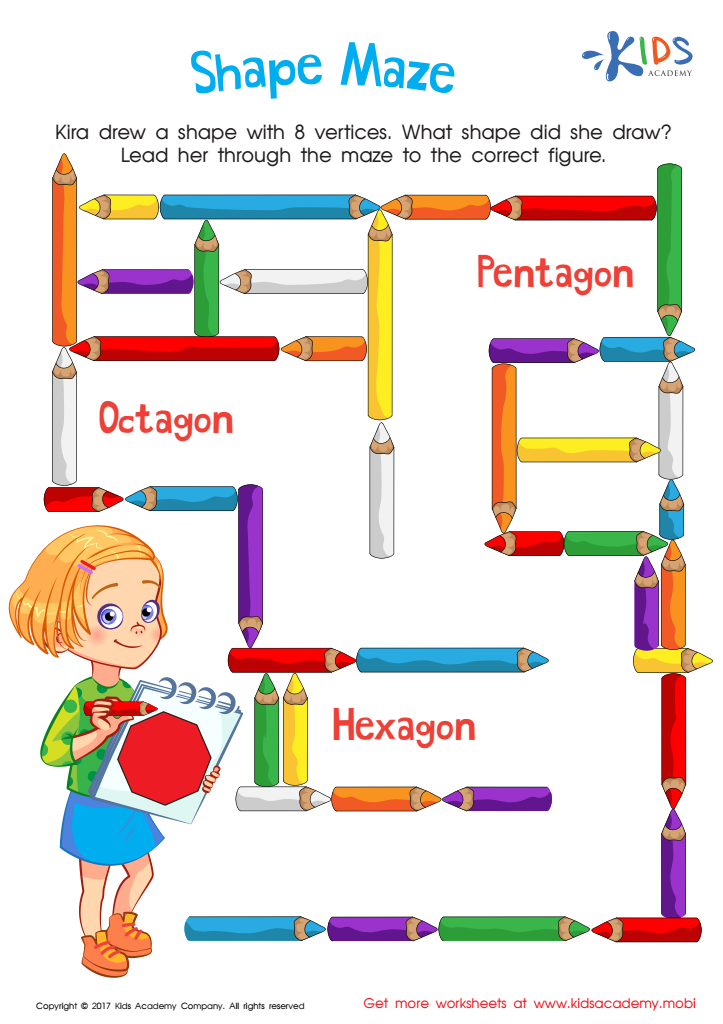

Shape Maze Worksheet
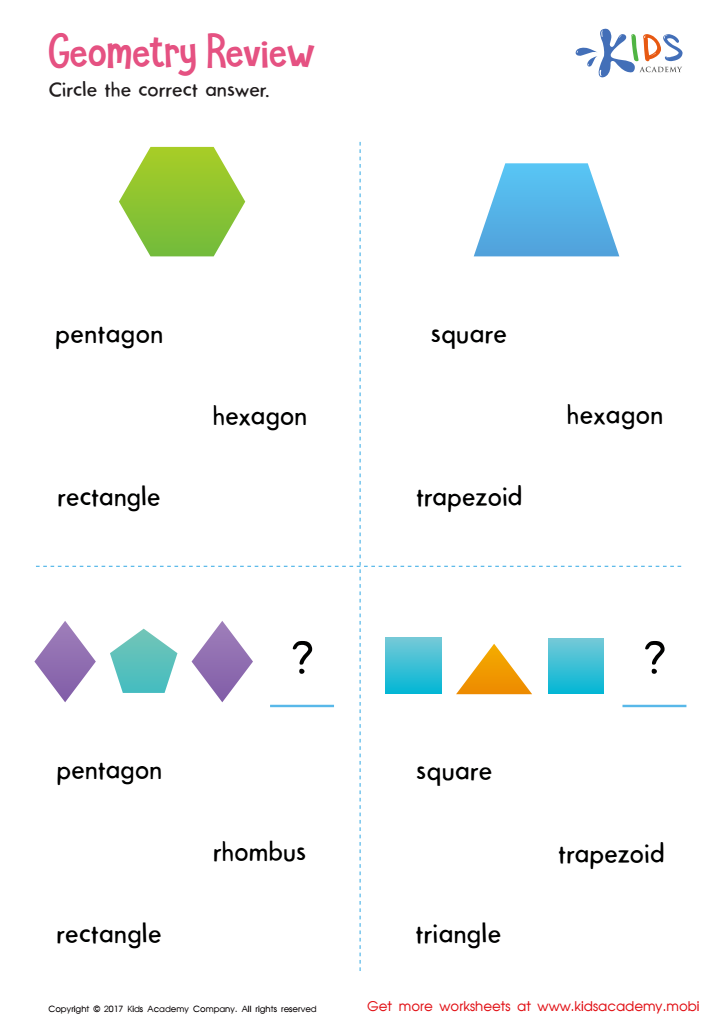

Geometry Review Printable
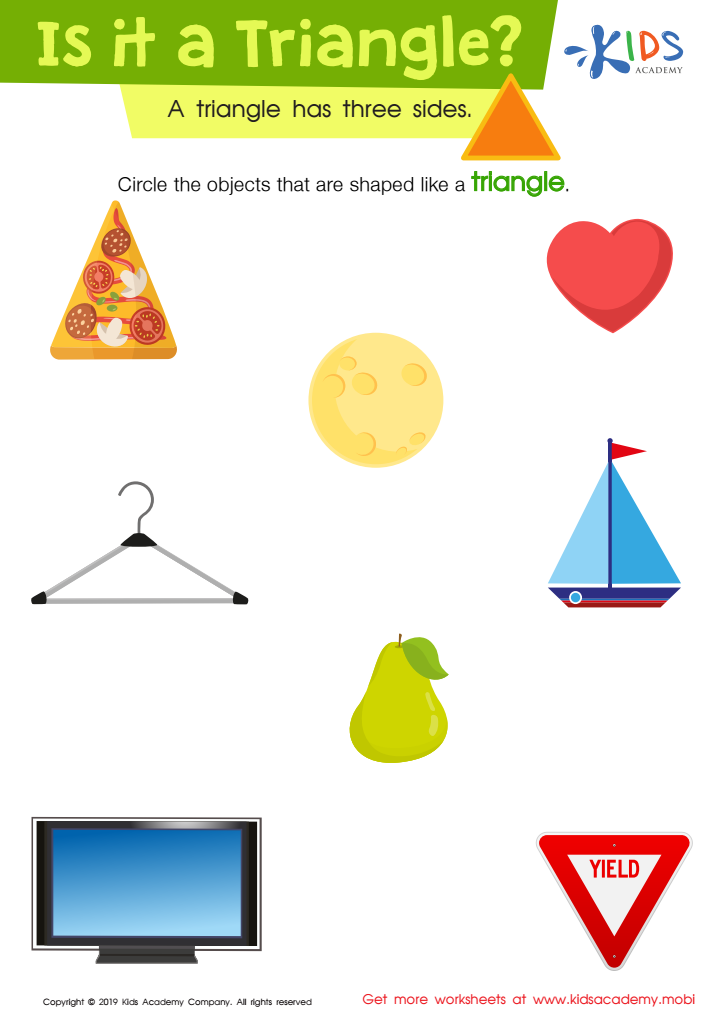

Is It a Triangle? Worksheet
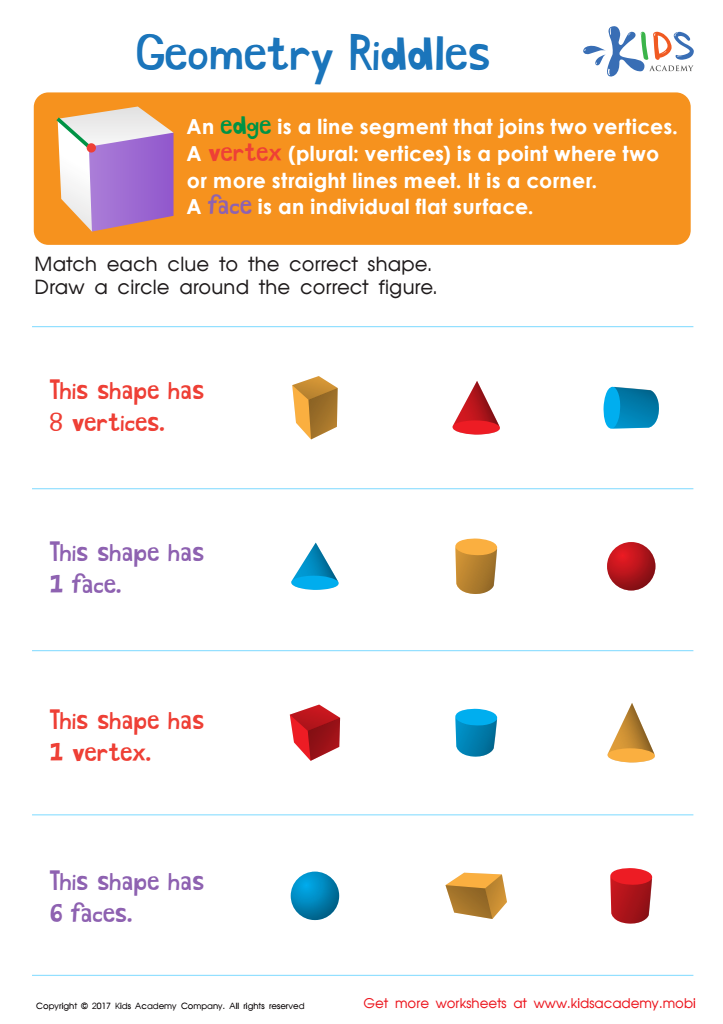

Geometry Riddles Printable
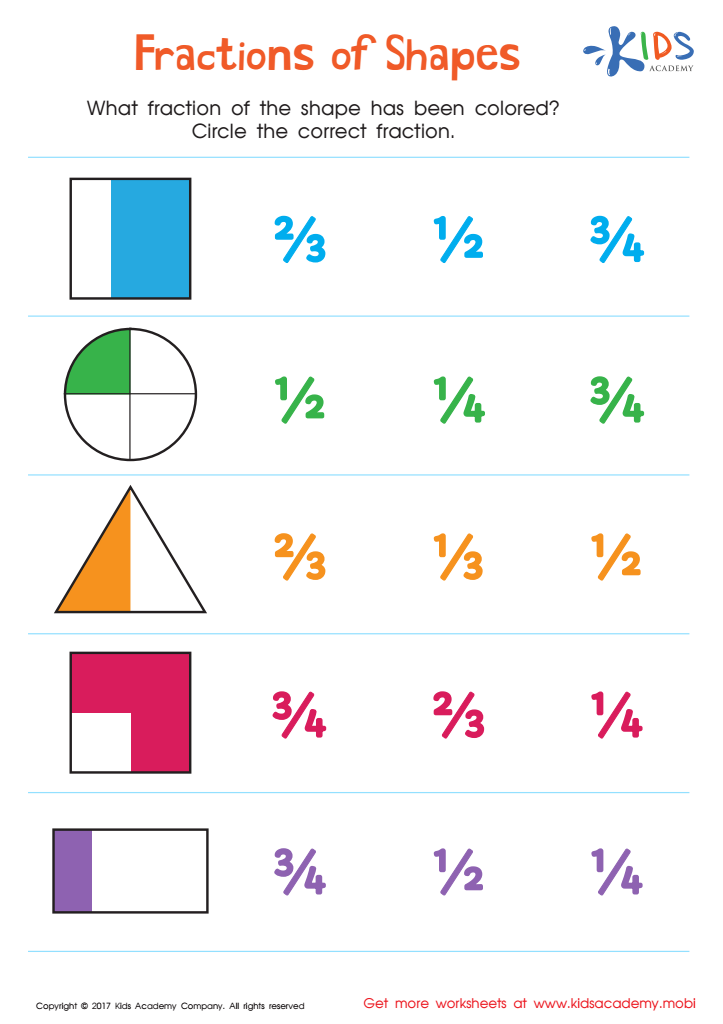

Fractions of Shapes: Math Concept Worksheet
Shape identification is a fundamental aspect of Grade 2 Geometry that plays a crucial role in young children's mathematical development and spatial understanding. Parents and teachers should care about this topic for several reasons. First, recognizing and naming shapes helps children develop critical thinking and problem-solving skills. By identifying different shapes, children learn to categorize and make connections, which are essential skills in early math.
Moreover, understanding shapes lays the groundwork for more complex mathematical concepts, such as symmetry, area, and volume, that they will encounter in higher grades. Shape identification also enhances spatial awareness, which is key in various fields such as science, engineering, and art.
Furthermore, engaging children with shapes promotes creativity and expression. Activities like constructing objects from geometric shapes encourage hands-on learning and improve fine motor skills. It is also beneficial for real-world applications; recognizing shapes helps children navigate their environments safely.
Ultimately, focusing on shape identification in Grade 2 helps build a solid mathematical foundation that promotes academic success and shapes a child's appreciation for the world around them. By prioritizing shape recognition, parents and teachers foster a positive and engaging learning experience for young learners.

 Assign to My Students
Assign to My Students







